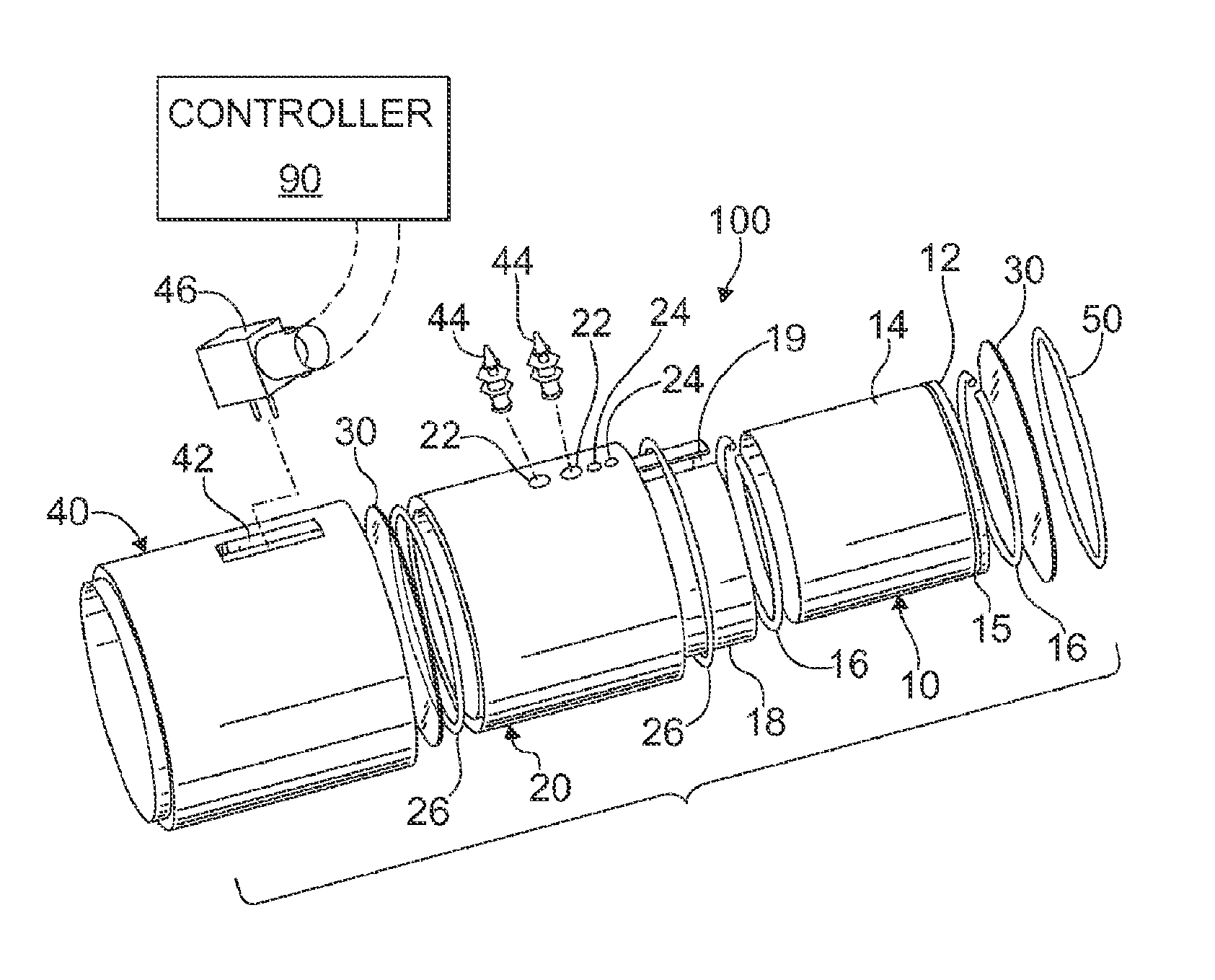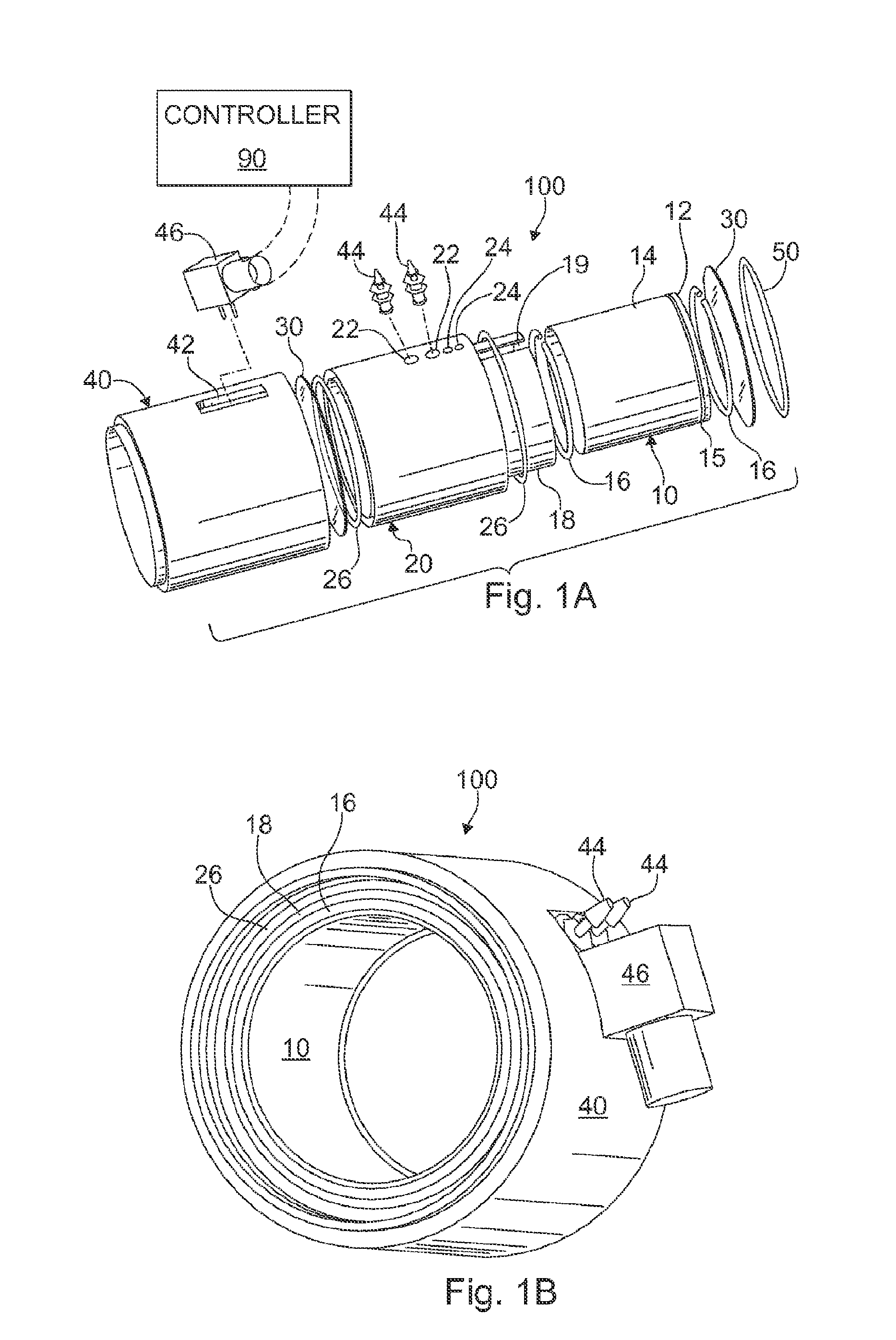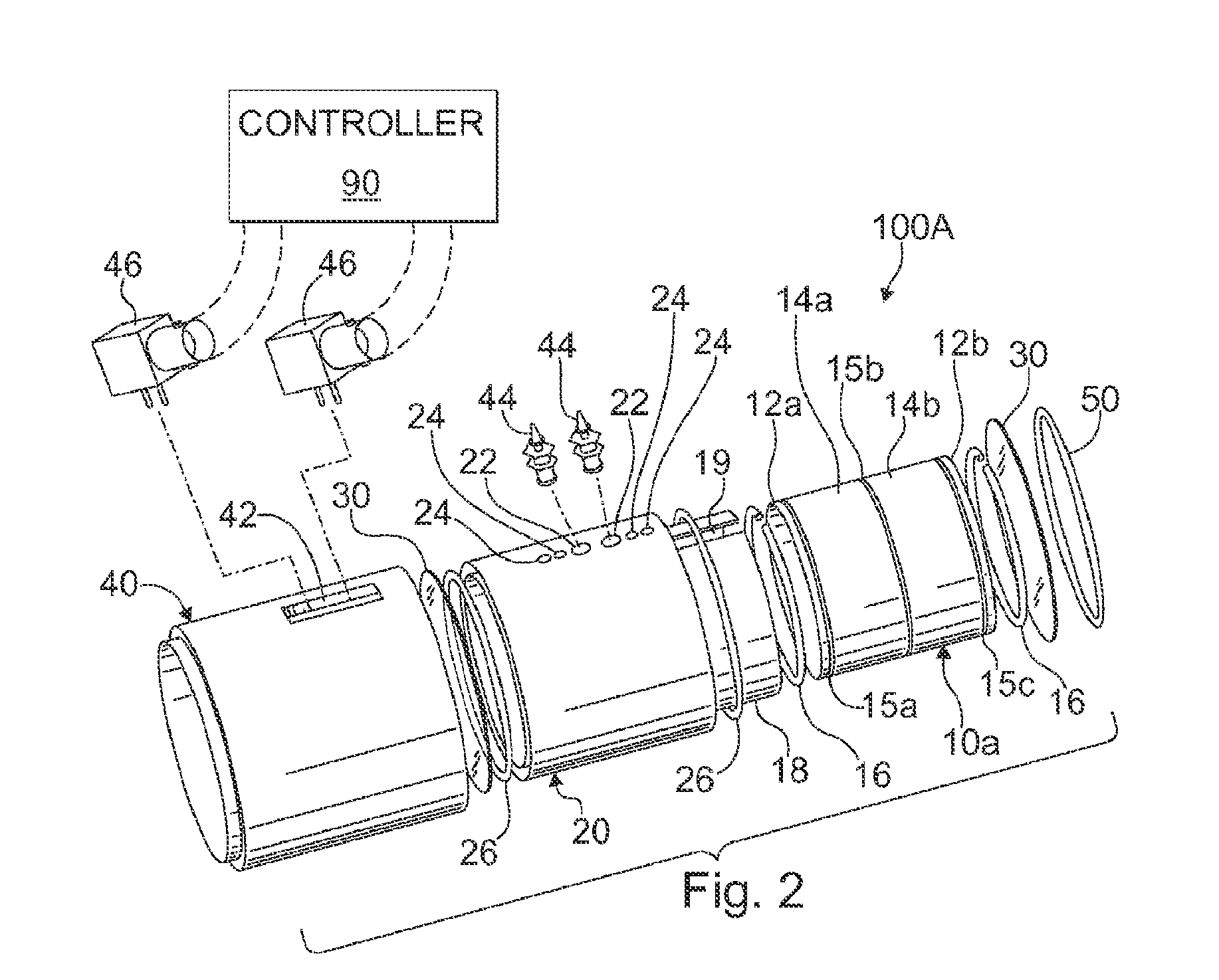Tunable acoustic gradient index of refraction lens and system
a technology of acoustic gradient index and refraction lens, which is applied in the field of tunable acoustic gradient index of refraction lens, can solve the problems of thermal profile, diminishing uniformity, and few techniques for temporally modifying the beam
- Summary
- Abstract
- Description
- Claims
- Application Information
AI Technical Summary
Benefits of technology
Problems solved by technology
Method used
Image
Examples
Embodiment Construction
[0072]Referring now to the figures, wherein like elements are numbered alike throughout, FIGS. 1B, 1B schematically illustrates an exemplary configuration of a TAG lens 100 in accordance with the present invention having a cylindrical shape. The TAG lens 100 is a piezoelectrically driven device that uses sound waves to modulate the wavefront of an incident light beam. The lens 100 is composed of a hollow piezoelectric tube 10 that is constrained by two transparent windows 30 on either end for optical access and filled with a refractive material, such as a gas, solid, liquid, plasma, or optical gain medium, for example. The TAG lens 100 works by creating a standing acoustic wave in the refractive liquid. The acoustic standing wave is created by applying an alternating voltage, typically in the radio-frequency range, to the piezoelectric tube 10 by a controller 90. The controller 90 may include a function generator passed through an RF amplifier and impedance matching circuit.
[0073]Tu...
PUM
 Login to View More
Login to View More Abstract
Description
Claims
Application Information
 Login to View More
Login to View More - R&D
- Intellectual Property
- Life Sciences
- Materials
- Tech Scout
- Unparalleled Data Quality
- Higher Quality Content
- 60% Fewer Hallucinations
Browse by: Latest US Patents, China's latest patents, Technical Efficacy Thesaurus, Application Domain, Technology Topic, Popular Technical Reports.
© 2025 PatSnap. All rights reserved.Legal|Privacy policy|Modern Slavery Act Transparency Statement|Sitemap|About US| Contact US: help@patsnap.com



